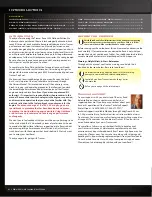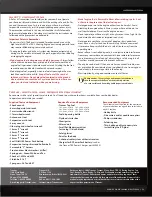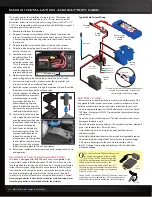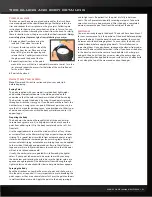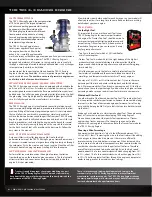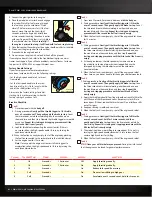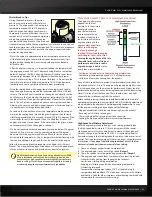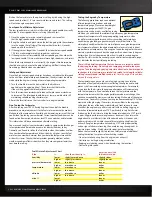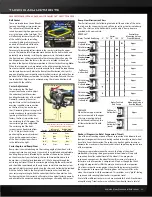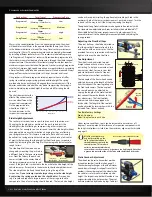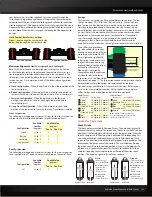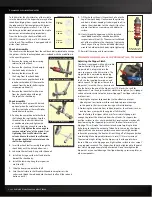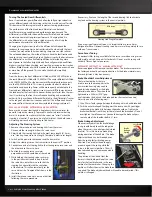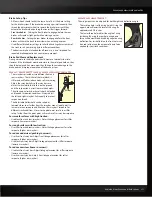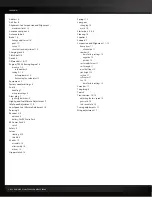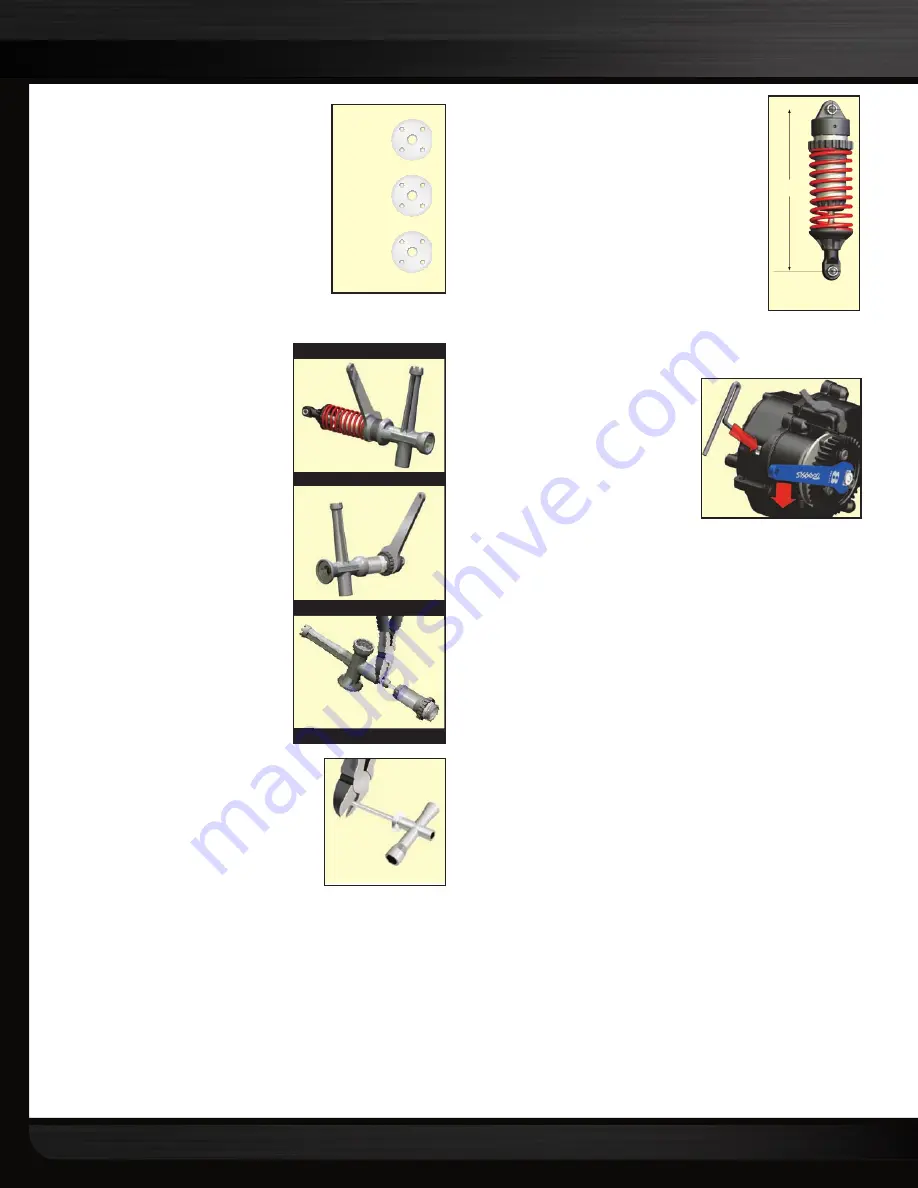
14 • REVO PLATINUM EDITION
To further alter the characteristics of the variable
rate, the diameter of the bypass holes may be fine
tuned by enlarging them - speeding even further
the rebound rate. Optional pistons with bypass
holes that are larger or smaller (1, 2, or 3) than
the factory installed stock pistons can be used to
decrease or increase damping respectively.
From the factory, the shocks are filled with
SAE-50W silicone oil. Only use 100% silicone oil
in the shock. The stock Revo is equipped with #2
pistons front and rear.
Shock disassembly
The shocks must be removed from the vehicle and disassembled to change
the pistons. Use the shock exploded views included with the model to aid
in the assembly process.
1.
Remove the spring and lower spring
retainer from the shock.
2.
Remove the shock cap (A) and empty
the shock body of shock oil.
3.
Remove the lower cap (B) and
the X-ring from the shock body.
4.
Use side cutters to grip the shock shaft
just above the rod end (C). Remove the
rod end from the shock shaft using the
suspension multi tool (C).
5.
Remove the shock shaft with piston
from the shock body out through
the top of the shock body.
Shock assembly
1.
Replace the stock piston with desired
optional piston. Be careful not to lose
the thin steel valve or the small washer
located below the piston.
2.
Position the new piston onto the shock
shaft above the small washer. Grip the
threads of the shaft with side cutters
or needlenose pliers and tighten the
nut with the 4-way wrench to secure the
assembly.
Only tighten the nut enough to
remove vertical “play” of the piston. Over
tightening the nut will deform the steel
valve and cause the shock to malfunction.
The piston should be free to rotate on the
shaft when tightened.
3.
Insert the shock shaft assembly through the
shock body until the piston bottoms out.
4.
Lubricate the shaft and X-ring with silicone oil.
5.
Install the X-ring over the shaft and into the
bore of the shock body.
6.
Install the lower cap using the suspension
multi tool (B).
7.
Slide the bump stop onto the shaft.
8.
Grip the shaft close to the threads with needle nose pliers or side
cutters and thread the rod end onto the shock shaft until the rod end
bottoms out (C).
9.
Fill the shock with new silicone shock oil up to the
top of the shock body. Slowly move the piston up
and down (always keeping it submerged in oil) to
release the air bubbles. Let the shock sit for a few
minutes to allow any remaining air bubbles to
surface.
10.
Slowly thread the upper cap with the installed
shock bladder onto the shock body with the
suspension multi tool (A). The excess oil will bleed
out of the small hole in the shock cap. Tighten the
shock cap until snug. Use the included steel shock
wrench to hold onto shock body while tightening.
11.
Reinstall the spring and lower retainer.
TRANSMISSION AND DIFFERENTIAL TUNING
Adjusting the Slipper Clutch
Your Revo is equipped with an adjustable
Torque-Control
™
slipper clutch. The
slipper clutch is integrated into the
main spur gear on the transmission. The
slipper clutch is adjusted by loosening
the spring-loaded locknut on the slipper
shaft. Use the supplied 8mm open-end
metric wrench. To tighten or loosen the
slipper nut, insert the 2.0mm hex wrench
into the hole in the end of the slipper shaft. This locks the shaft for
adjustments. Turn the adjustment nut clockwise to tighten (less slippage)
and counter-clockwise to loosen (more slippage). The slipper clutch has
two functions:
1.
Limiting the engine’s torque output to the wheels to prevent
wheelspin on low traction surfaces and help to prevent damage
to the gears in the transmission during on-throttle landings.
2.
Protecting the drivetrain from sudden impact or shock loads (such as
landing from a jump with the engine at full throttle).
From the factory the slipper clutch is set for minimal slippage, just
enough to protect the drivetrain from shock loads. On slippery, low
traction surfaces such as a hard-packed, dry racetrack you may benefit
from loosening the slipper adjustment nut to allow for more clutch
slippage. This will make the truck easier and more forgiving to drive
by helping to reduce the amount of wheel spin. Loosening the slipper
adjustment can also improve performance on extreme high traction
surfaces by preventing the front end from lifting off of the ground when
accelerating. Make slipper adjustments in small 1/8 turn increments.
The maximum tight setting for the slipper is just at the point where
there is little or no tire slippage on a high traction surface such as carpet
or a prepared racetrack. The slipper should not be tightened to the point
that clutch slippage is completely eliminated. Do not overtighten the
slipper nut or you could damage the slipper bearings, pressure plates, or
other components.
TUNING ADJUSTMENTS
87mm
Stock shock center-
to-center distance
A. Tighten/Loosen Upper Cap
C. Remove/Install Rod End
B. Tighten/Loosen Lower Cap
Multi-tool Shock Functions
Piston Installation/Removal
2
2
2
1
1
1
3
3
3
Piston 1:
1.10 mm
Piston 2:
1.00 mm
Piston 3:
0.95 mm
Shock piston hole sizes
5304 Manual Work.indd 14
3/12/08 7:48:27 PM


